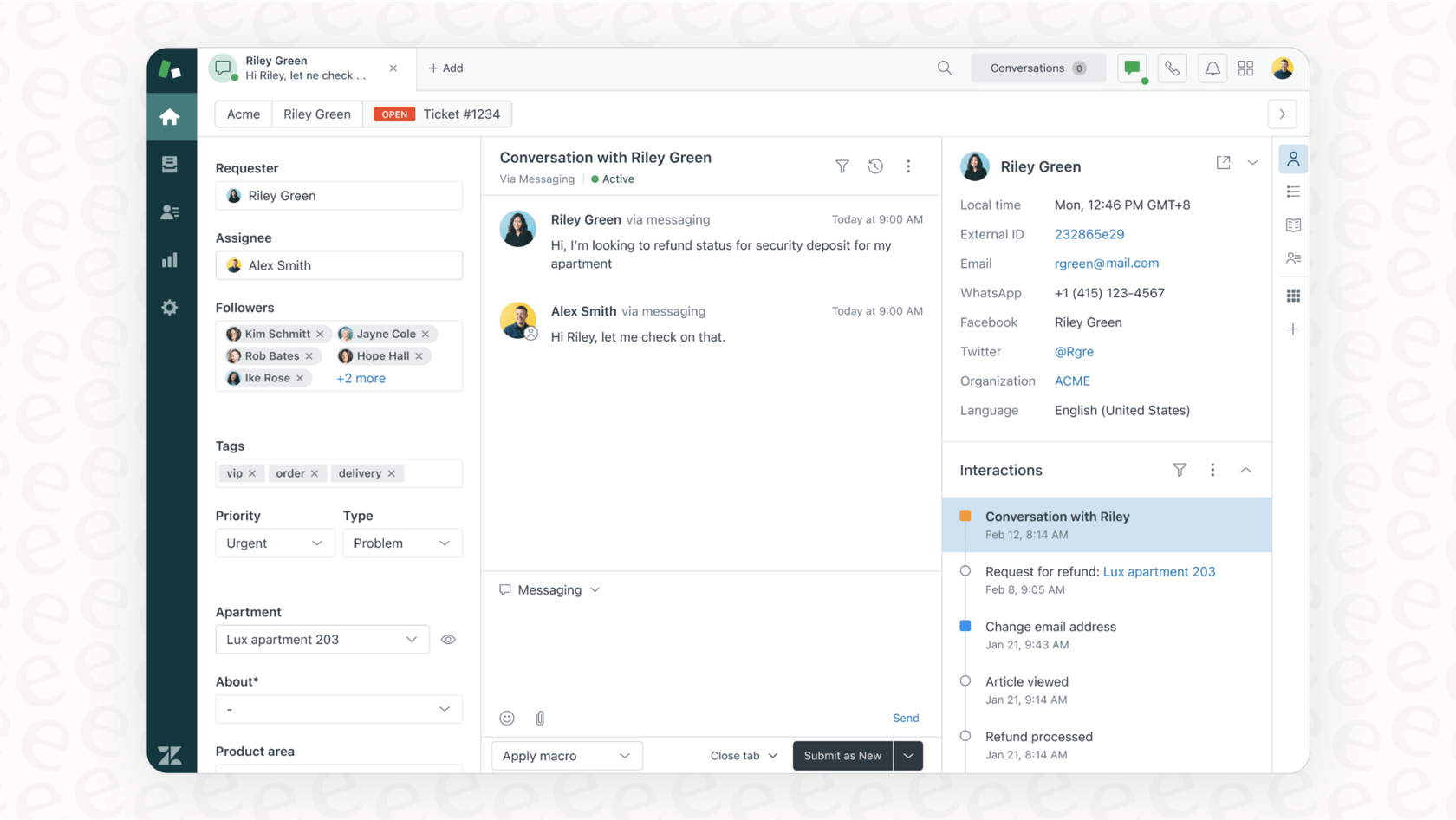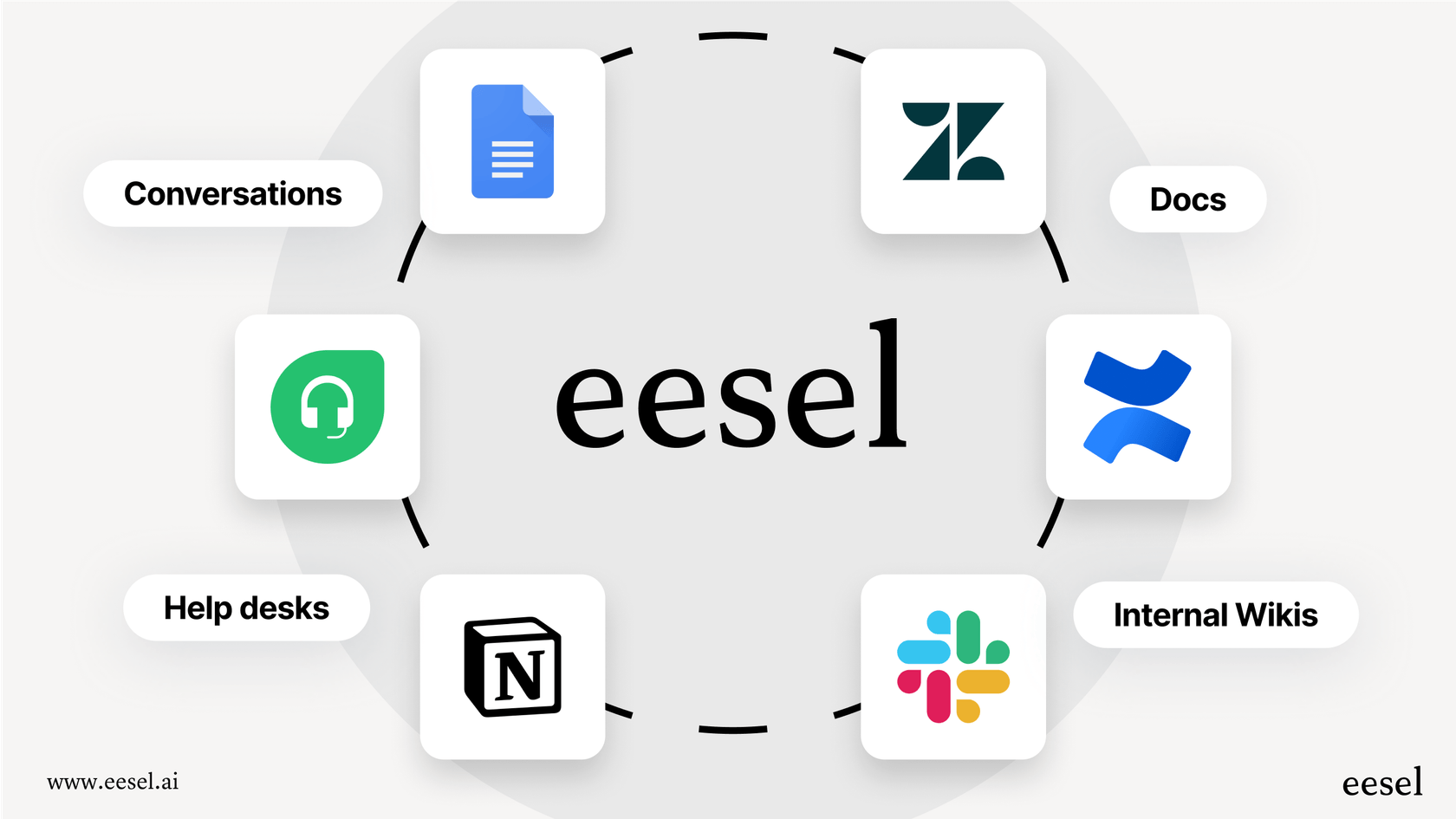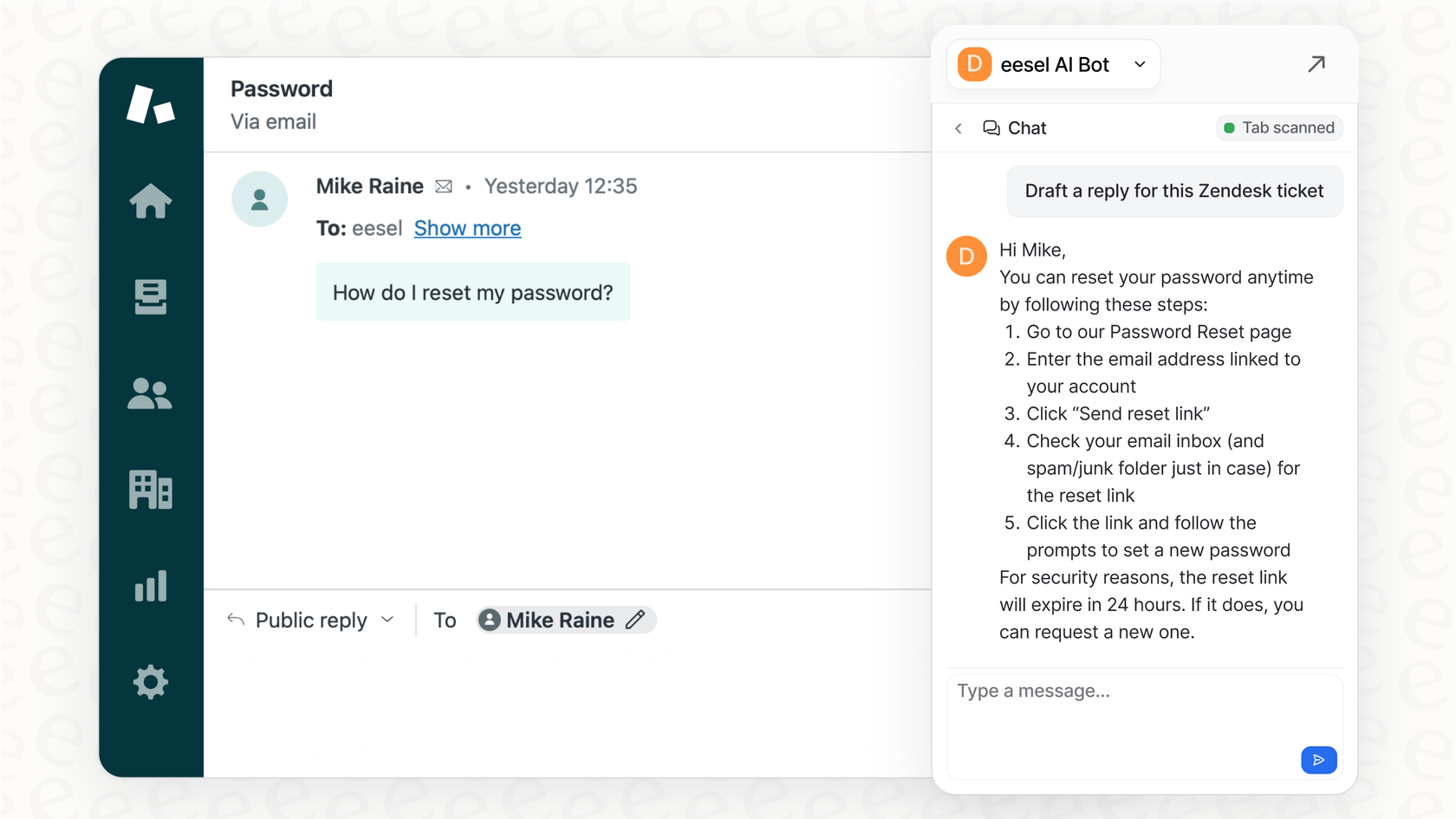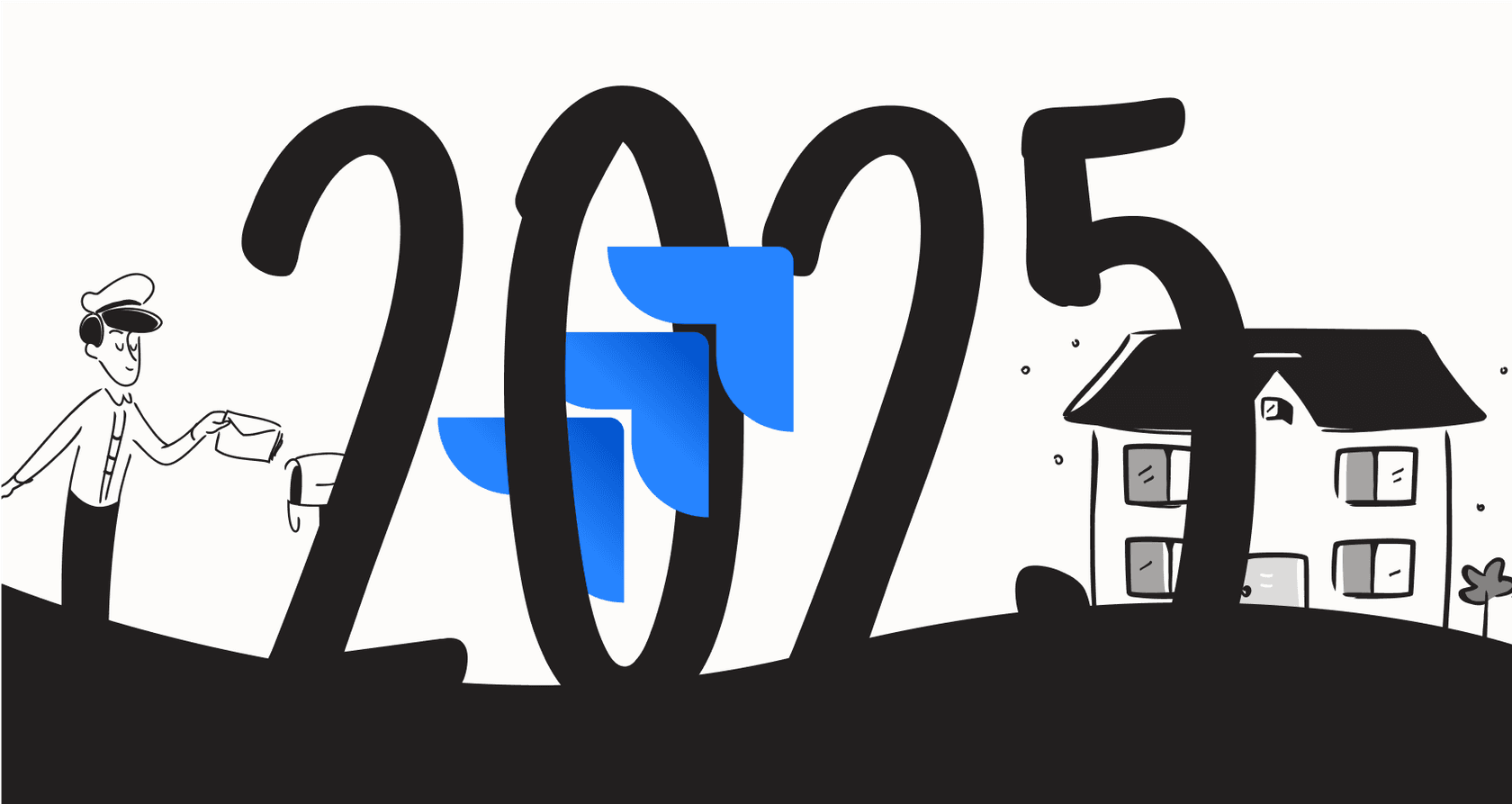
Picking the right software for your support team is one of those decisions that can make or break your entire workflow. Get it right, and things just flow. Get it wrong, and you’re staring down the barrel of clunky processes, frustrated agents, and unhappy customers. Two of the biggest names you’ll bump into are Jira Service Management and Zendesk, and honestly, they come from completely different planets.
One is a beast built for technical teams, all about process, structure, and detail. The other is designed for smooth, easy customer conversations, focusing on making every interaction feel personal.
This often leaves teams stuck in a tough spot. Do you go with the tool your engineers love but your support agents can barely navigate? Or the one that makes customer support a breeze but can’t handle a complex IT request to save its life?
Let's cut through the noise. This guide breaks down the real-world differences between JSM and Zendesk, looking at how they handle customer support, what their AI features actually do, and what they’ll cost you when all is said and done. We'll also talk about a third path: what if you could add a layer of seriously smart AI to the help desk you already use, without having to tear everything down and start from scratch?
What is Jira Service Management?
Jira Service Management (JSM) is Atlassian’s tool for what the industry calls IT Service Management, or ITSM. In simple terms, it’s built for technical folks, like your IT, DevOps, and engineering teams. They use it to manage internal requests, track down software bugs, and keep a tight leash on system changes. At its heart, JSM is all about bringing order and repeatable processes to technical operations.
Its biggest advantage is how deeply it connects with the rest of the Atlassian ecosystem. If your developers are already living in Jira Software and all your company knowledge is in Confluence, JSM fits right in. It lets you build incredibly detailed workflows that can follow an issue from the moment a customer reports it all the way to the final line of code a developer ships. But while you can aim it at external customers, its DNA is technical. The language, the interface, the whole process-heavy vibe, it’s all designed to solve complex operational problems, not just answer a simple question.
What is Zendesk?
Zendesk, on the other hand, is a customer service platform from top to bottom. It was created with one goal in mind: helping businesses manage conversations with their external customers. The whole point is to have a single, organized place for every customer interaction, no matter if it comes from an email, live chat, social media message, or a phone call.
Everything about Zendesk revolves around the customer experience. The interface is clean and built for speed, helping agents get the context they need to solve problems without a lot of clicking around. It’s fantastic at creating a seamless support experience, where a conversation can hop from a chat window to an email thread without the customer having to repeat their life story. While you can bend it to work as an internal help desk, it just doesn't have the specialized IT features for things like incident management that are standard in JSM.
 A screenshot of the Zendesk interface, showing how it manages customer conversations from multiple channels.::
A screenshot of the Zendesk interface, showing how it manages customer conversations from multiple channels.::Core focus: ITSM vs. CX
Before we get into the nitty-gritty of features, it helps to remember why these two platforms were created in the first place. What your team spends most of its day doing will probably point you to the right tool.
Where Jira Service Management shines
JSM is most comfortable running an internal IT help desk. Think about the classic IT tasks: an employee needs access to a new app, a laptop is acting up, or a server goes down. JSM provides the kind of rigid, trackable workflows you need to handle these things systematically. Since it links directly to developer tickets in Jira Software, it’s a perfect fit for tracking bugs and incidents that need an engineer’s attention.
But this is also its biggest weakness for customer-facing teams. The platform is filled with technical jargon like "epics," "stories," and "sprints." For a support agent who just needs to solve a billing problem, that kind of complexity is a huge hurdle that can slow them down and kill productivity.
Where Zendesk shines
For teams talking to customers all day, Zendesk is the clear favorite. This is especially true in areas like e-commerce or B2C software, where conversation volume is high and every second counts. Its agent workspace is designed to handle a flood of requests from all over the place, giving agents a full customer history right at their fingertips. It's built for conversations, not just tickets.
 The Zendesk Agent Workspace, which is designed for high-volume customer conversations.::
The Zendesk Agent Workspace, which is designed for high-volume customer conversations.::The trade-off? It’s not an ITSM tool. Zendesk wasn’t built to manage complicated IT processes like formal change management or asset tracking. If your team needs to follow strict IT protocols and document every single step of an infrastructure update, you’ll find Zendesk feels a bit lightweight.
A modern alternative
This whole "either/or" problem is why a new way of thinking is catching on. A lot of teams don't want to make a huge compromise or suffer through a painful migration. Instead of ripping out their help desk, they're adding a smart AI layer on top of it.
That’s where eesel AI comes into the picture. It connects directly to your existing JSM or Zendesk setup with a simple one-click integration. You get sophisticated AI features like autonomous agents and intelligent reply suggestions, all without messing up the workflows your team is already used to. It's about upgrading what you have, not starting over.
| Feature | Jira Service Management | Zendesk | eesel AI |
|---|---|---|---|
| Primary Audience | IT, DevOps, Engineering Teams | Customer Support, CX Teams | Both IT & Customer Support |
| Best For | Internal ITSM, technical issue tracking | External customer conversations | Automating support in your existing help desk |
| Core Philosophy | Process-driven (ITIL) | Conversation-driven (CX) | Integration-driven (AI Layer) |
| Setup Complexity | High, requires technical knowledge | Moderate, complex rules need admins | Low, self-serve in minutes |
Key feature comparison
The platform you pick has a direct effect on how your agents work and, ultimately, how your customers feel. Let's look at a few key areas that make a real difference.
Ticket and request management
Jira is all about "issues." This is a great way to track a software bug or a multi-step IT request because it lets you add tons of detail, statuses, and links to other technical tasks. But for a simple customer question like, "Where's my order?" this whole structure feels way too formal and clunky.
Zendesk thinks in "conversations." Each ticket is a running thread of communication, which feels a lot more natural for everyone involved. It gives you a clear, chronological history of the entire customer relationship, not just a snapshot of a single problem.
 Zendesk’s conversation-based ticket view, showing a customer's history for context.::
Zendesk’s conversation-based ticket view, showing a customer's history for context.::This is one spot where an AI layer can make a massive improvement to either system. With its AI Triage product, eesel AI can plug into JSM or Zendesk and automatically read incoming requests. It can figure out what the ticket is about, add the right tags, send it to the correct team, and set the priority, saving your agents from the mind-numbing work of sorting through a messy queue.
Knowledge base and self-service
Good self-service is one of the best ways to lighten your support team's load.
Jira's solution for this is its sister product, Confluence. And while Confluence is a fantastic wiki tool, it requires a whole separate subscription. This doesn't just add to the cost; it can also create a disjointed experience where users have to jump from the JSM portal to a different platform to find what they need.
Zendesk comes with a built-in knowledge base called Guide. It's simple, easy for customers to search, and gets the job done. The only problem is that it’s yet another information silo. Most companies have useful information scattered everywhere, in internal wikis, shared Google Docs, Notion pages, and product specs. Zendesk's Guide can't see any of that.
This is where eesel AI offers a huge advantage. It connects all of your knowledge sources instantly. You can link it to Zendesk Guide, Confluence, Google Docs, Notion, your website, and even your past ticket history. The AI then uses this complete, unified brain to give accurate answers, creating a single source of truth for your entire company.
 An infographic showing how eesel AI unifies knowledge from multiple sources for better self-service.::
An infographic showing how eesel AI unifies knowledge from multiple sources for better self-service.::A deep dive: Automation
Both JSM and Zendesk have gone all-in on AI, but their approaches, and how easy it is to actually use their tools, are very different.
AI-powered agents and chatbots
Jira’s virtual agent is solid for standard IT tasks. It's great at handling straightforward requests like, "I need access to the marketing drive." But this feature is locked away in their pricey Premium plan, and teaching it to handle the subtle back-and-forth of a real customer conversation can be a long and complicated project.
Zendesk's AI Agents are more conversational right out of the box and are pretty easy to set up for answering basic questions. But if you want to build more complex chat flows or handle a serious volume of inquiries, you'll need to shell out for expensive add-ons that can make your bill skyrocket.
The eesel AI Agent offers a completely different experience. Here’s what sets it apart:
-
Truly self-serve: You can sign up and have it running in minutes. There are no mandatory sales calls or long demos just to get your hands on the product.
-
Learns from your history: eesel AI is the only platform that actually trains on your team's past solved tickets. This means it instantly picks up on your brand’s specific solutions, tone, and voice from day one.
-
Risk-free simulation: Before the AI ever talks to a real customer, you can run a simulation on thousands of your past tickets. This gives you a precise, data-backed forecast of how well it will perform, what your resolution rate will be, and how much money you'll save.
 The eesel AI simulation feature, which forecasts automation performance, offering a data-backed view.::
The eesel AI simulation feature, which forecasts automation performance, offering a data-backed view.::Agent assistance and workflow automation
Jira's Atlassian Intelligence can give agents a hand by summarizing tickets or suggesting replies. But its automation builder is notoriously tricky for anyone who isn't a developer or a long-time Jira admin. Trying to build a custom rule often feels like you need a secret decoder ring.
Zendesk offers simpler automation tools they call "Triggers and Automations." They’re good for basic things like sending an auto-reply, but they don't have the flexibility for more advanced workflows that need to talk to other tools.
This is where the eesel AI Copilot and AI Actions really shine. eesel AI gives you full control. You can use a simple prompt editor to tell the AI exactly how it should sound. More importantly, you can connect it to your other systems with custom API actions. For example, you could build an action that lets the AI "check order status in Shopify" or "issue a refund in your billing system." This opens up a level of custom automation that’s just not possible with the native tools alone.
 The eesel AI Copilot drafting a reply within Zendesk, showcasing advanced agent assistance.::
The eesel AI Copilot drafting a reply within Zendesk, showcasing advanced agent assistance.::Pricing and TCO
At a glance, the pricing for both platforms might seem straightforward. But the total cost is often much higher than just the monthly subscription fee.
Jira Service Management pricing
Jira has a few tiers:
-
Free: Up to 3 agents.
-
Standard: Starts at $22.05 per agent/month.
-
Premium: Starts at $49.35 per agent/month.
-
Enterprise: Custom pricing.
The catch is that some of the most important features are locked behind the expensive plans. If you want the advanced ITSM modules or any of the Atlassian Intelligence tools, you have to be on the Premium plan. You also have to remember the "hidden" cost of a separate Confluence license for your knowledge base, which pushes the real cost even higher.
Zendesk pricing
Zendesk’s popular Suite plans are also tiered:
-
Suite Team: $55 per agent/month (billed annually).
-
Suite Growth: $89 per agent/month.
-
Suite Professional: $115 per agent/month.
-
Suite Enterprise: $169 per agent/month.
Zendesk’s business model is built on add-ons. If you want their advanced AI, workforce management, or quality assurance features, each one comes with its own hefty price tag. A plan that looks affordable at first can easily double or triple in cost once you add the tools you actually need to run your business.
A transparent alternative
This is another place where a third-party AI layer offers a much better approach. eesel AI's pricing model is designed to be clear and predictable. All products (AI Agent, Copilot, Triage, etc.) are included in a single plan, with tiers based on how many interactions you have per month. There are no per-resolution fees, so you don't get punished for being successful. You can even start with a flexible month-to-month plan and avoid the long-term commitments that many other companies lock you into.
Jira Service Management or Zendesk: Which is right for you?
When you lay it all out, the choice between Jira Service Management and Zendesk gets a lot clearer. It’s not about which tool is "better," but which one is right for the job you need to do.
Jira Service Management is the hands-down winner for IT-focused organizations. If your world is all about ITSM, incident management, and deep connections with your development cycle, JSM was built for you, especially if you're already in the Atlassian ecosystem.
Zendesk is the go-to for customer-facing teams. If your main goal is to handle a ton of customer conversations across different channels and deliver a top-notch experience, Zendesk’s friendly, conversation-first design is hard to beat.
But many of today's fast-moving companies are stuck in the middle, needing both technical discipline and an amazing customer experience. This is where you might want to think differently. Instead of picking one imperfect platform and trying to force it to work for everyone, consider making the tool you already have even better.
eesel AI offers that strategic path. It's not another help desk you have to migrate to; it's an intelligent layer that makes your current one smarter. By plugging powerful, self-serve AI directly into your existing JSM or Zendesk instance, you get the best of both worlds, without the cost, headaches, and disruption of a massive migration project.
Ready to see how AI can supercharge your existing help desk, not replace it? Start your free eesel AI trial and you can be live in minutes.
Frequently asked questions
Jira Service Management is purpose-built for internal IT service management (ITSM) and technical operations. It excels at managing complex IT requests, incident tracking, and integrating with developer workflows, making it ideal for technical teams.
JSM offers virtual agents for IT tasks and basic agent assistance, but often requires expensive plans and complex setup. Zendesk provides more conversational AI Agents and simpler automation, though advanced features come as costly add-ons. eesel AI offers a flexible, self-serve AI layer that learns from your history and connects all knowledge.
JSM typically uses Confluence as a separate knowledge base, which can create a disjointed experience. Zendesk has a built-in Guide, but it's often an isolated silo. eesel AI unifies all existing knowledge sources, including both, to provide comprehensive self-service.
Both platforms have tiered pricing, but JSM often has hidden costs like a separate Confluence subscription, and advanced features are locked in higher tiers. Zendesk's cost can skyrocket with necessary add-ons. eesel AI offers transparent, single-plan pricing based on interaction volume, avoiding per-resolution fees and long-term commitments.
Zendesk is designed from the ground up for external customer service, excelling at managing high volumes of customer conversations across email, chat, social media, and phone with a clean, agent-friendly interface focused on customer experience.
Yes, third-party AI layers like eesel AI can integrate directly with your existing JSM or Zendesk setup. This allows you to add sophisticated AI features, such as autonomous agents, intelligent reply suggestions, and automated triage, without disrupting current workflows or requiring a costly migration.








